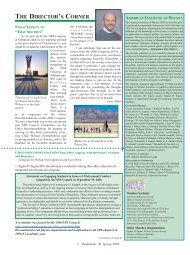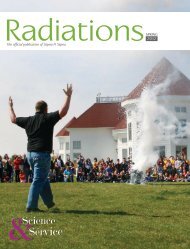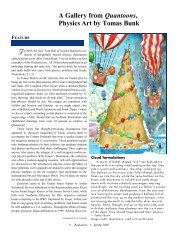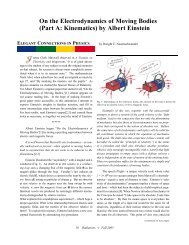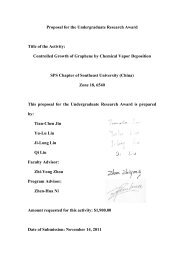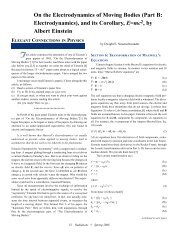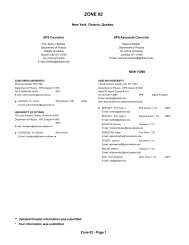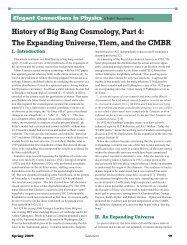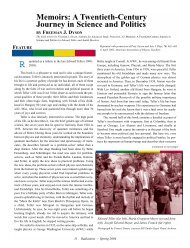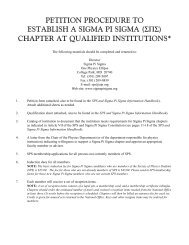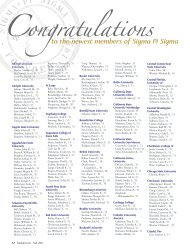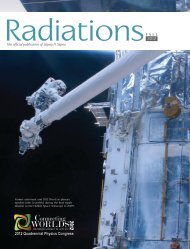Download a PDF of the entire issue - Sigma Pi Sigma
Download a PDF of the entire issue - Sigma Pi Sigma
Download a PDF of the entire issue - Sigma Pi Sigma
You also want an ePaper? Increase the reach of your titles
YUMPU automatically turns print PDFs into web optimized ePapers that Google loves.
1. Search for galaxies and objects<br />
formed shortly after <strong>the</strong> big bang,<br />
2. Determine how galaxies evolved,<br />
3. Observe formations <strong>of</strong> early stars<br />
and planetary systems, and<br />
4. Measure characteristics <strong>of</strong> planetary<br />
systems and <strong>the</strong>ir potential for life.<br />
The Hubble has provided extensive<br />
information on both expected and<br />
unexpected fronts, and NASA is hoping<br />
JWST will continue to inspire current<br />
and future scientists, as <strong>the</strong> Hubble has.<br />
While <strong>the</strong> Hubble searches for visible<br />
light, <strong>the</strong> James Webb Space Telescope<br />
will have a near-infrared camera and<br />
spectrograph, as well as a mid-infrared<br />
instrument and a fine-guidance sensortunable<br />
filter. The telescope will also<br />
have a unique orbit; <strong>the</strong> JWST will need<br />
to orbit at <strong>the</strong> second Lagrangian point.<br />
(For more information on <strong>the</strong> orbit and<br />
Lagrangian points, visit www.jwst.nasa.<br />
gov/orbit.html.) Currently, JWST is<br />
looking at a 2018 launch date, assuming<br />
everything continues according to plan.<br />
The Space Launch System<br />
The James Webb Telescope is not<br />
<strong>the</strong> only NASA program in <strong>the</strong> news<br />
recently. On September 14, 2011, NASA<br />
announced how it plans on getting<br />
Americans into space: <strong>the</strong> Space Launch<br />
System (SLS). SLS is designed primarily<br />
to take humans into deep space but<br />
would also be backup transportation for<br />
<strong>the</strong> International Space Station (ISS).<br />
According to NASA, it will have an initial<br />
lift <strong>of</strong> 70 metric tons, carry an Orion<br />
capsule, and have a liquid hydrogen and<br />
oxygen propulsion system. In addition,<br />
it will incorporate space shuttle main<br />
engines and a J-2X engine. The intent <strong>of</strong><br />
<strong>the</strong> SLS is to carry humans beyond low<br />
Earth orbit, and NASA hopes that SLS<br />
will make <strong>the</strong> moon, near-Earth asteroids,<br />
Mars, and eventually Mars’ moons<br />
Fall 2011 Radiations 27



